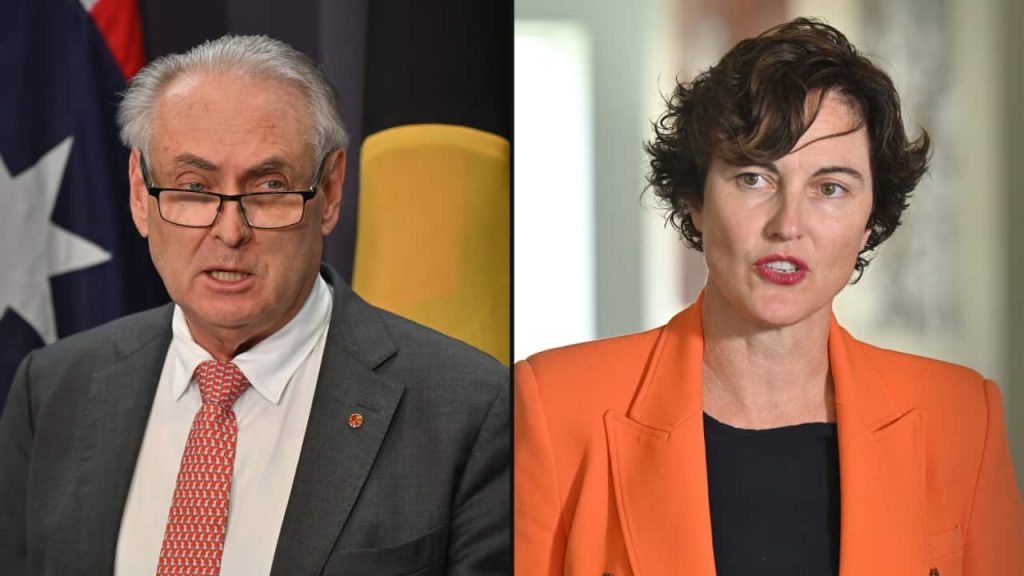Federal Labor’s Electoral Reform Plan: Strengthening Democracy or Major Party Stitch-Up?
Federal Labor recently unveiled a comprehensive electoral reform plan aimed at capping political donations and election spending, with the goal of enhancing democracy in Australia. The proposed legislation, set to be introduced in federal parliament next week, has garnered support from the Coalition, showcasing bipartisan recognition of the need for reform in the electoral system.
However, the announcement of these reforms and the government’s plan to expedite the legislation through parliament before Christmas have sparked criticism from members of the crossbench. They argue that these measures could potentially limit the entry of independent, grassroots candidates into the political arena, labeling it as a "major party stitch-up" and a move to stifle competition.
Proposed Changes in Electoral Reform
Limiting Political Donations
- Individuals restricted to donating no more than $20,000 to a single political candidate annually.
- Those contributing to multiple candidates would face an annual cap of $600,000.
- Special Minister of State Don Farrell emphasized the importance of curbing donation drives and excessive fundraising to prevent a scenario where only candidates sponsored by billionaires could secure election victories.
Election Spending Restrictions
- Lower house candidate spending capped at $800,000.
- Political parties limited to $90 million for federal campaigns.
- Senate candidates constrained to a $200,000 spending cap.
Disclosure of Political Donations
- Stricter rules for disclosing political donations, with near real-time reporting and a lowered threshold from $16,900 to $1,000.
- During elections, donations must be reported weekly, except in the final campaign week when daily disclosures are required.
- Monthly reporting of donations outside election periods, to be published by the Australian Electoral Commission (AEC).
Public Funding and Subsidies
- Political parties and independent candidates to receive administrative funding of $30,000 per MP and $15,000 per senator.
- Increase in public subsidy from $3.346 to $5 per eligible vote to aid compliance with disclosure requirements.
Labor’s proposed reforms also target enhancing transparency around political donations, shifting towards a more accountable and equitable electoral landscape.
Reactions to the Reform Plan
Criticism from Independent MPs
- Independent MP Kate Chaney voiced concerns that while transparency in political donations and spending was overdue, the proposed legislation appeared designed to favor major parties and exclude new competitors.
- Chaney highlighted the declining popularity of major parties and the need for them to regain voter trust rather than resorting to tactics that limit competition.
Concerns from Independent Senators
- Independent ACT senator David Pocock echoed the sentiment that electoral reform was necessary but stressed the importance of creating a fair playing field.
- Pocock criticized the lack of consultation and transparency in the reform process, raising doubts about the potential impact on community independents and the democratic process.
Opposition from Clive Palmer
- Businessman Clive Palmer condemned Labor’s bill as an attempt to manipulate elections and pledged to challenge the reforms in the High Court, citing concerns about abuse of power and suppression of competition.
Timeline for Implementation
The proposed changes are contingent on parliamentary approval, with Labor optimistic about securing passage within the next fortnight. If successful, these reforms would not come into effect until after the next federal election, signaling a transformative shift in Australia’s electoral landscape.
In conclusion, while Federal Labor’s electoral reform plan aims to fortify democracy and promote fairness in the political arena, it has sparked debate and controversy among stakeholders. The balance between limiting undue influence from wealthy donors and fostering a diverse, inclusive political landscape remains a focal point of contention as Australia navigates the path towards electoral reform.
FAQ:
- What are the key components of Federal Labor’s electoral reform plan?
- Capping political donations and election spending.
- Enhancing transparency in political donation disclosure.
- Increasing public funding and subsidies for political parties and candidates.
- How have independent MPs and senators responded to the proposed reforms?
- While acknowledging the need for electoral reform, some independent lawmakers have raised concerns about potential biases favoring major parties and restricting competition.
- What is the timeline for implementing these electoral reforms?
- Pending parliamentary approval, the changes would not take effect until after the next federal election, allowing time for stakeholders to adjust to the new regulatory framework.
- What are the key components of Federal Labor’s electoral reform plan?

